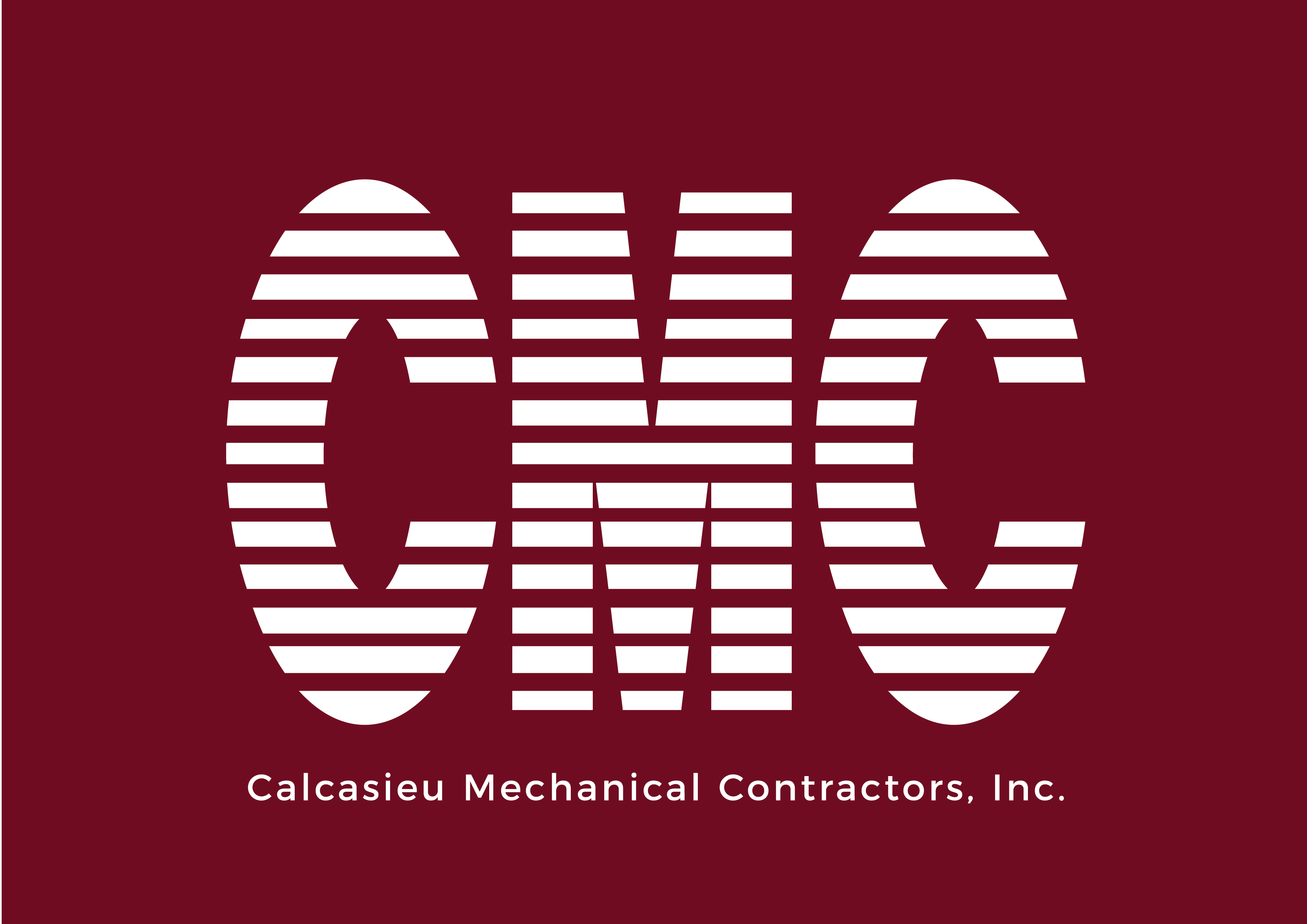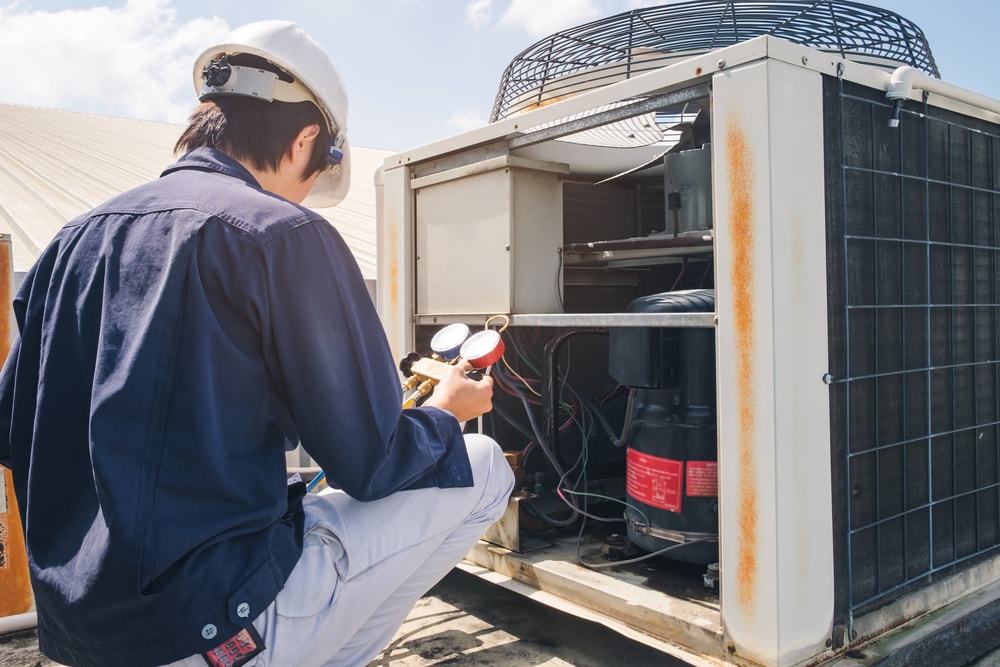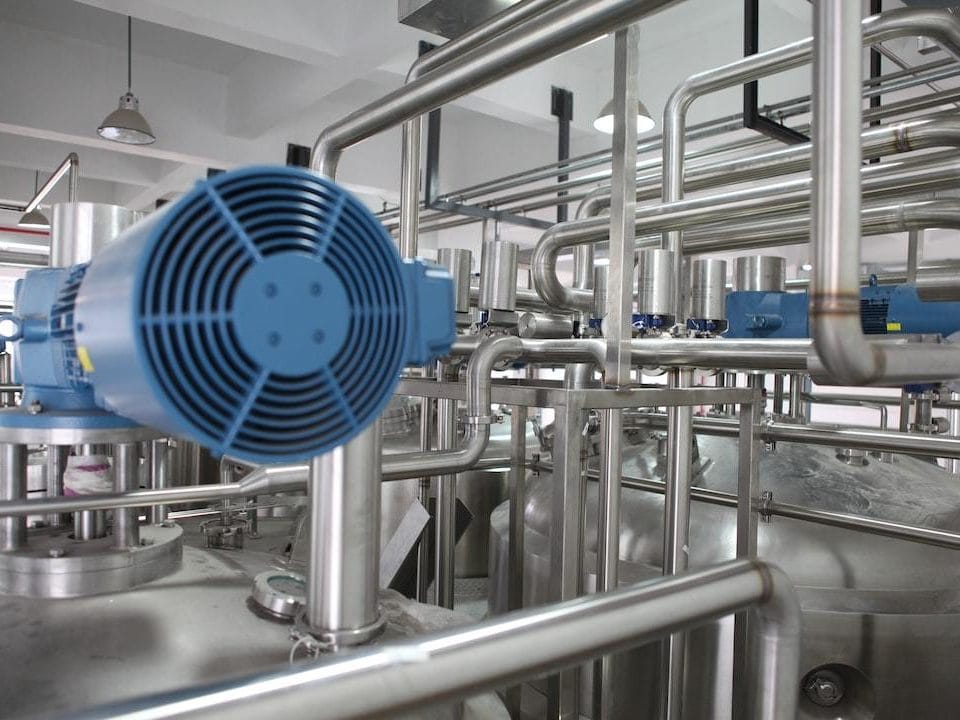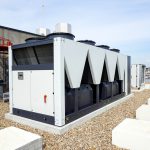
How Does a Chiller Work HVAC? Your Complete Guide
January 9, 2024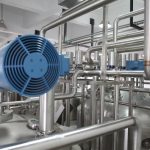
Maximizing Efficiency with Your Industrial HVAC System
March 7, 2024Stepping into the world of commercial HVAC might seem like navigating a maze with its complex systems and technical jargon. But, it’s crucial for businesses aiming to create comfortable environments for both employees and customers. This post cuts through the complexity, giving you a clear understanding of what makes these systems tick, how they differ from their residential cousins, and why that matters.
We’ll explore various types of HVAC systems tailored for commercial use, shedding light on their unique benefits and limitations. You’ll also get insight into essential factors guiding system selection—because picking the right setup can drastically reduce energy bills and enhance comfort levels.
Maintenance shouldn’t be an afterthought; we’ve got tips to keep your system humming smoothly for years. Plus, innovations in technology are making these units smarter than ever before—we’ll show you what’s on the cutting edge.
Finally, choosing a skilled contractor is as vital as selecting the equipment itself; we provide pointers to help you make an informed decision. Stick around—you’re about to become well-versed in commercial HVAC essentials.
Table Of Contents:
- Understanding Commercial HVAC Systems
- Types of Commercial HVAC Systems
- Factors Influencing Commercial HVAC Selection
- Energy Efficiency in Commercial HVAC
- Maintenance and Upkeep of Commercial HVAC Systems
- Innovations in Commercial HVAC Technology
- Choosing a Commercial HVAC Contractor
- FAQs in Relation to Commercial Hvac
Understanding Commercial HVAC Systems
Think of commercial HVAC systems as the unsung heroes in office buildings, shopping centers, and all sorts of large structures. They do more than just keep us cool in summer and warm during winter. These systems ensure that air quality is up to snuff so everyone inside can breathe easily.
Types of Commercial HVAC Systems
Diving into the world of commercial HVAC, you’ll find a variety pack of systems tailored to different needs. First off, there’s the single split system which is perfect for small spaces like cafes or boutiques because it’s affordable and allows individual room control. Then we’ve got multi-split systems that work a bit harder; they can connect multiple indoor units to one outdoor unit, making them ideal for medium-sized buildings with limited outside space.
Last but not least are VRF or VRV systems. These are the big guns best suited for large establishments such as hotels or skyscrapers because they adjust refrigerant flow based on demand, offering precise temperature control and efficiency.
Factors Influencing Commercial HVAC Selection
Selecting an HVAC system isn’t about picking the shiniest model; it involves considering several key factors unique to your building’s needs. Size matters here – too small and your system will be overworked; too big and you’re wasting energy (and money). Efficiency ratings also play a crucial role because who doesn’t love saving some green while being green? Finally, think about your specific building requirements – from noise constraints in hospitals to humidity control in galleries.
Maintenance and Upkeep of Commercial HVAC Systems
Maintaining these behemoths ensures they run smoothly without gobbling up extra cash on repairs down the line. Regular check-ups include cleaning filters, inspecting ducts, and ensuring thermostats work correctly. It sounds like much, but believe me, it pays off by extending your system’s lifespan significantly.
Types of Commercial HVAC Systems
When you’re navigating the world of commercial HVAC systems, it’s like choosing a new car for your business. You’ve got options galore, each with its own set of features designed to meet specific needs. Whether it’s efficiency or flexibility you’re after, understanding these types will help you make an informed decision.
Single Split Systems
The single split system is the trusty sedan of HVAC systems—reliable and cost-effective. Ideal for small offices or shops, this type allows individual room control without breaking the bank on installation costs. Because they don’t share components, if one unit goes down, the rest keep chugging along unaffected.
A notable advantage here is scalability. As your business grows, so can your heating and cooling solution by simply adding more units to match demand.
Multi-Split Systems
Moving up a notch are multi-split systems; think of them as SUVs—they handle more passengers comfortably. These are perfect when space for outdoor units is limited but you still need multiple indoor units connected to a single outdoor component. By using inverter technology that adjusts compressor speed based on real-time demand, multi-split systems save significantly on energy costs compared to several singles.
This setup requires less penetration through external walls but involves more complex installation and higher upfront costs than its simpler counterpart—the trade-off being greater long-term savings and efficiency gains.
VRF/VRV Systems
Last up are Variable Refrigerant Flow (VRF) or Variable Refrigerant Volume (VRV) systems—the luxury limousines offering top-of-the-line comfort with high-end efficiency ratings especially suited for medium to large spaces such as hotels or office buildings.
Their smart technology enables precise temperature control across different zones simultaneously, making them incredibly flexible and capable.
In essence, VRF/VRV solutions represent the pinnacle in climate control innovation by maximizing occupant comfort while minimizing operating expenses—a win-win situation any way you look at it.
Factors Influencing Commercial HVAC Selection
Choosing the right commercial HVAC system is like picking a new member for your team. You want someone reliable, efficient, and a perfect fit for your building’s needs. Here are some key factors to consider.
Size Matters
The size of your HVAC system can make or break its efficiency. A unit too small won’t keep up with demand, leaving you hot under the collar in the summer months. On the flip side, an oversized unit cycles on and off more than it should, increasing wear and tear while hiking up energy bills. Calculating the correct size involves considering square footage, ceiling height, window area, and insulation levels—a task best left to professionals.
To get this sizing just right, the U.S. Department of Energy suggests a detailed assessment that takes into account not only space but also local climate conditions.
Efficiency Is Key
An efficient system isn’t just good for the planet; it’s great for your pocketbook too. Today’s standards mean that even baseline models offer decent energy use stats compared to older units. However, investing in higher-efficiency systems pays off over time through lower utility bills.
Energy Star-certified products, for instance, demonstrate significant savings without sacrificing performance.
Tailored To Your Building’s Needs
No two buildings are exactly alike—each has its unique challenges whether it be unusual layouts or specific temperature-sensitive areas. So, it’s crucial to choose a system flexible enough to handle these quirks. A zoned HVAC setup might be what you need if different parts of your building have varying cooling or heating requirements due to sun exposure or occupancy patterns. This way, everyone stays comfortable without wasting energy where it’s not needed. Check out how zoning can boost comfort and save money here.
Maintenance Must-Dos
Maintenance keeps any machine running smoothly, and HVAC systems are no exception. Regular checks ensure everything works as intended, minimizing breakdowns when you least expect them. Even simple tasks like changing filters regularly can prolong your system’s life. A comprehensive maintenance plan tailored to your specific equipment will keep things cool—or warm—as needed. Learn why regular maintenance is critical. You wouldn’t drive a car year after year without an oil change, right? Think of regular upkeep in similar terms: necessary, not optional.
Energy Efficiency in Commercial HVAC
When it comes to commercial HVAC systems, thinking about energy efficiency is like considering the fuel efficiency of a car. It’s not just about saving on operational costs; it’s also about reducing your carbon footprint and promoting a healthier environment.
The Role of Energy-Saving Features
Modern commercial HVAC systems come loaded with features designed to minimize energy use without compromising comfort. Variable frequency drives (VFDs), for example, adjust motor speed based on demand, slashing energy consumption dramatically compared to traditional fixed-speed motors. Similarly, smart thermostats learn from your building’s usage patterns to optimize heating and cooling schedules.
To put this into perspective, integrating VFDs can reduce an air conditioning system’s energy consumption by up to 50%. This isn’t just good news for the planet—it’s great for your bottom line too.
The Impact on Operational Costs
Surely enough, investing in high-efficiency HVAC equipment might seem pricey upfront but consider this: efficient systems can lower electricity bills significantly over time. According to studies conducted by industry experts, the U.S. Department of Energy highlights that commercial buildings can save up to 30% on their utility bills simply by opting for more efficient HVAC solutions.
This savings is akin to cutting down a hefty portion of recurring expenses every month—money that could be better spent elsewhere within your business operations or expansions. Moreover, ENERGY STAR-certified buildings are often valued higher and attract more tenants due to its proven cost-effectiveness and commitment towards sustainability, proving that what’s good for the earth is also good for business.
Maintenance and Upkeep of Commercial HVAC Systems
Think about your commercial HVAC system like a marathon runner. Just as an athlete needs regular training, healthy nutrition, and doctor check-ups to perform their best, your HVAC system requires consistent maintenance for peak performance. Let’s break down the essentials of keeping it in top shape.
Regular Cleaning and Inspection
Dust and debris are the archenemies of your HVAC system. A build-up can lead to decreased efficiency or even damage over time. Schedule professional cleanings at least twice a year to keep everything running smoothly.
During these visits, technicians should also inspect components for wear and tear. Catching issues early can prevent costly repairs down the line. It’s much like catching a small health issue before it becomes serious – proactive care saves pain (and money) later on.
Changing Filters Regularly
The simplest yet most overlooked step is changing out air filters regularly—think every three months at a minimum but more often in high-use periods or dusty environments.
Fresh filters not only improve air quality by trapping pollutants; they also help maintain airflow efficiency, reducing strain on the system which extends its lifespan significantly.
A study highlighted by the Environmental Protection Agency shows that maintaining clean filters can reduce energy consumption by up to 15% – that’s good for both the planet and your wallet.
Scheduling Seasonal Tune-Ups
To ensure reliability when you need it most, schedule tune-ups before the heating season kicks off in the fall and again before cooling demand spikes in spring. These checks allow professionals to adjust refrigerant levels, tighten electrical connections, and lubricate moving parts among other tasks ensuring efficient operation all year round.
Treating your commercial HVAC with care doesn’t just prolong its life—it ensures comfort for building occupants and keeps operational costs in check too. So make sure routine maintenance is marked on your calendar because just like our marathon runner, a little attention goes a long way towards winning performance.
Innovations in Commercial HVAC Technology
When we talk about innovations in commercial HVAC technology, it’s like stepping into a world where efficiency meets futuristic control. The leaps and bounds made in this field are not just cool; they’re reshaping how businesses think about climate control and energy use.
Smart Thermostats and IoT Integration
Gone are the days of manual adjustments and guesswork. Smart thermostats have taken over, giving users unprecedented control over their environments with a tap on their smartphones. These devices learn from your habits to optimize heating and cooling schedules, slashing energy bills without sacrificing comfort. For an insider look at how these gadgets work hand-in-hand with IoT devices to streamline operations, check out insights on energy-efficient smart home technologies.
This integration allows for real-time monitoring and adjustments across multiple locations, ensuring that each space is always at its ideal temperature without any wasted energy.
VRF Systems: Efficiency Redefined
Variable Refrigerant Flow (VRF) systems represent another leap forward. These systems provide precise temperature control to different zones within a building from one central system – think of it as having personalized climate settings for every room based on occupancy or time of day. VRFs operate quietly and more efficiently than traditional units by continuously adjusting the refrigerant flow to meet specific demands.
The result? Lower operational costs and improved comfort levels across the board. ASHRAE has fantastic resources if you want to dive deeper into how VRF technology achieves such feats.
Maintenance Gets Smarter Too
Last but not least, predictive maintenance tools are changing the game by using data analytics to predict when equipment needs servicing before breakdowns occur. This proactive approach can extend the lifespan of HVAC components significantly while preventing costly downtime for repairs.
Predictive maintenance isn’t just fancy talk; it’s backed by algorithms that monitor system performance in real time, identifying potential issues early. By addressing problems before they escalate, businesses can save big on repair costs while keeping their systems running smoothly around the clock.
Choosing a Commercial HVAC Contractor
Finding the right commercial HVAC contractor is like looking for a needle in a haystack. But, it doesn’t have to feel that way if you know what to look out for.
Experience and Expertise Matter
The backbone of any reputable HVAC contractor is their experience and expertise. You wouldn’t want someone who’s just dipped their toes into commercial systems handling your installation or service needs. A seasoned pro with years under their belt will not only navigate complex installations with ease but also anticipate potential issues before they become problems. Companies like Calmech shine in this arena, bringing extensive knowledge to every project.
Another layer to consider is specialization. Some contractors are jacks of all trades but masters of none. Look for those who breathe commercial HVAC day in and day out—this focus ensures they’re up-to-date on the latest technologies and methods that can save you time and money.
Credentials That Speak Volumes
Licensing and certification aren’t just fancy stickers on a van; they’re proof of legitimacy and skill level. Any contractor worth their salt will have no issue showcasing these credentials upon request—a clear sign they stand by the quality of their work.
Beyond basic licensing, check if they hold any certifications from recognized industry organizations such as NATE (North American Technician Excellence) or ACCA (Air Conditioning Contractors of America). These endorsements mean your contractor has met stringent standards for knowledge and professionalism in the field.
Past Projects Paint a Picture
Last but not least, dive into their portfolio or case studies. Calmech’s past projects, for example, offer insights into both scale diversity—proving whether they can handle jobs big or small—and customer satisfaction levels through testimonials detailing real-world experiences with them as partners on various ventures.
This exploration helps paint an accurate picture so you can make an informed decision aligned with your specific needs.
With careful consideration guided by these factors, you’re well-equipped to choose an exceptional commercial HVAC contractor ready to tackle any challenge head-on. By keeping these key points in mind, you’ll be able to make a confident decision that ensures your facility’s comfort and efficiency for years to come.
FAQs in Relation to Commercial Hvac
What is a commercial HVAC?
A commercial HVAC system heats, cools, and ventilates larger spaces like offices, malls, and schools.
Is commercial HVAC different than residential?
Yes. Commercial systems are bigger, more complex, and designed for large buildings versus homes.
What is the most common commercial HVAC system?
Rooftop units (RTUs) dominate because they save space and efficiently serve large areas.
Why is commercial HVAC so expensive?
Their size, complexity, and energy demands drive up costs compared to residential setups.
Jumping into commercial HVAC isn’t just about staying cool or warm. It’s about making smart choices that pay off in comfort and cost savings.
Remember, the right system does more than adjust temperature; it shapes experiences for employees and customers alike. Choosing wisely means considering size, efficiency, and your building’s unique needs.
Maintenance is key. Regular check-ups prevent breakdowns and keep those energy bills low.
Innovation is changing the game. Embrace new tech to stay ahead of the curve in efficiency and control.
Picking a skilled contractor sets you up for success from start to finish.
Nail these essentials, and your journey through commercial HVAC will be smoother,saving you time, money, and stress along the way.

Hailing from the picturesque town of Lake Charles, Louisiana, Jim Blanchard stands as an exemplar in commercial HVAC installation and services. As President of Calcasieu Mechanical, he has leveraged his deep industry knowledge and innovative strategies to establish the company as a leading regional service provider. Under Jim’s leadership, Calcasieu Mechanical has expanded its portfolio of high-quality services and earned the trust and respect of businesses throughout Louisiana. The company’s commitment to excellence, reflected in its endeavors, stems from Jim’s dedication to ensuring every project meets and exceeds client expectations.
